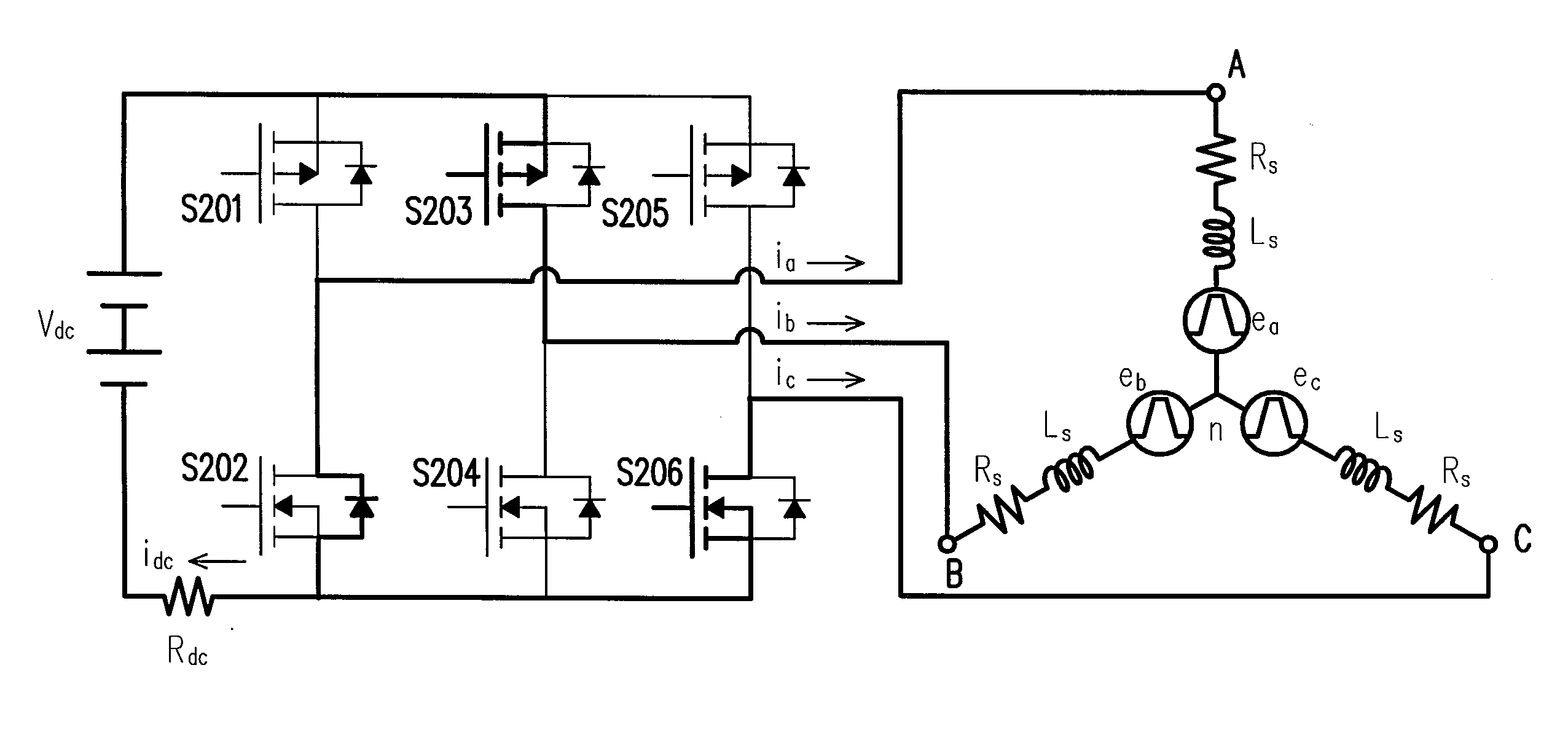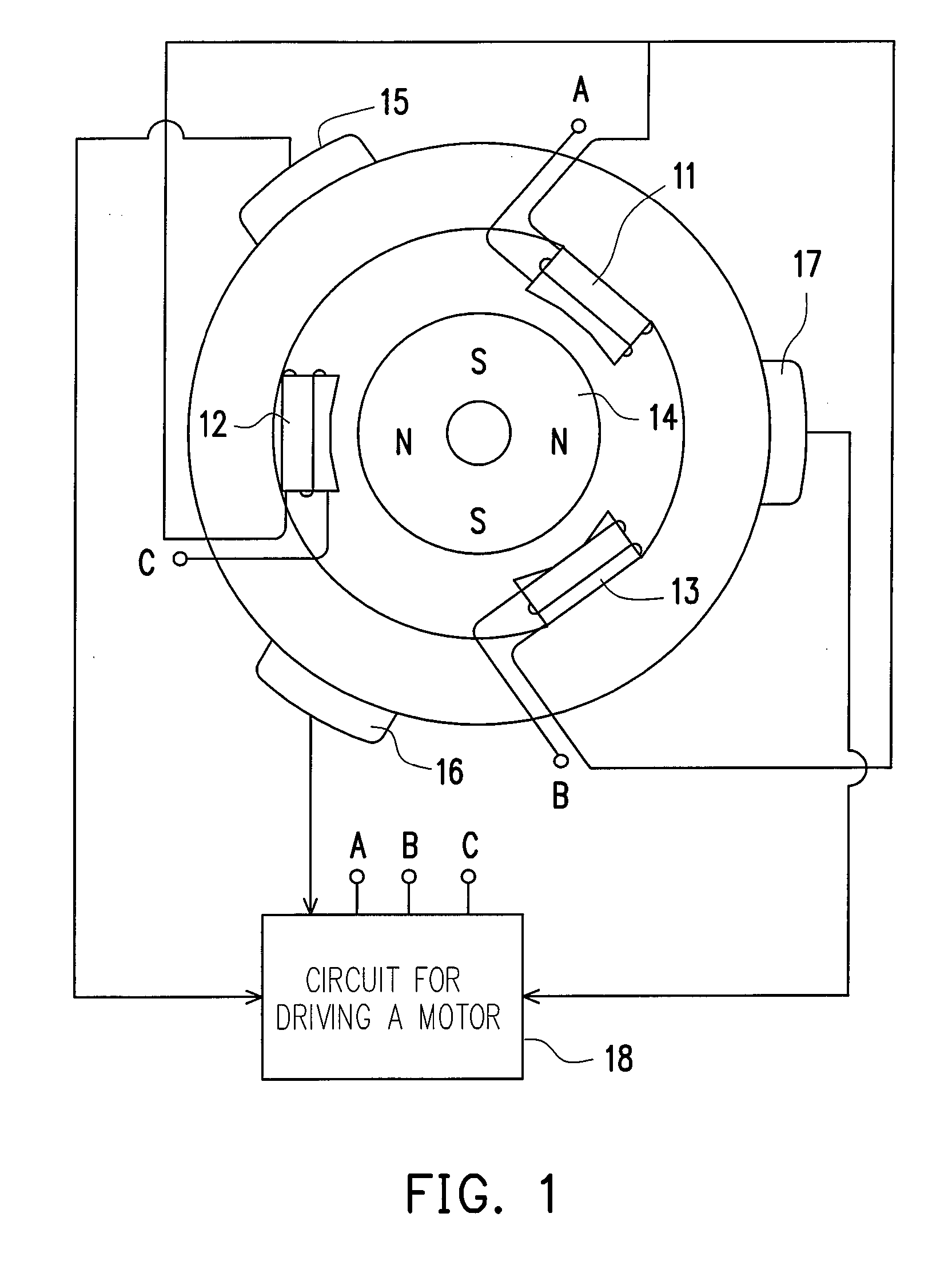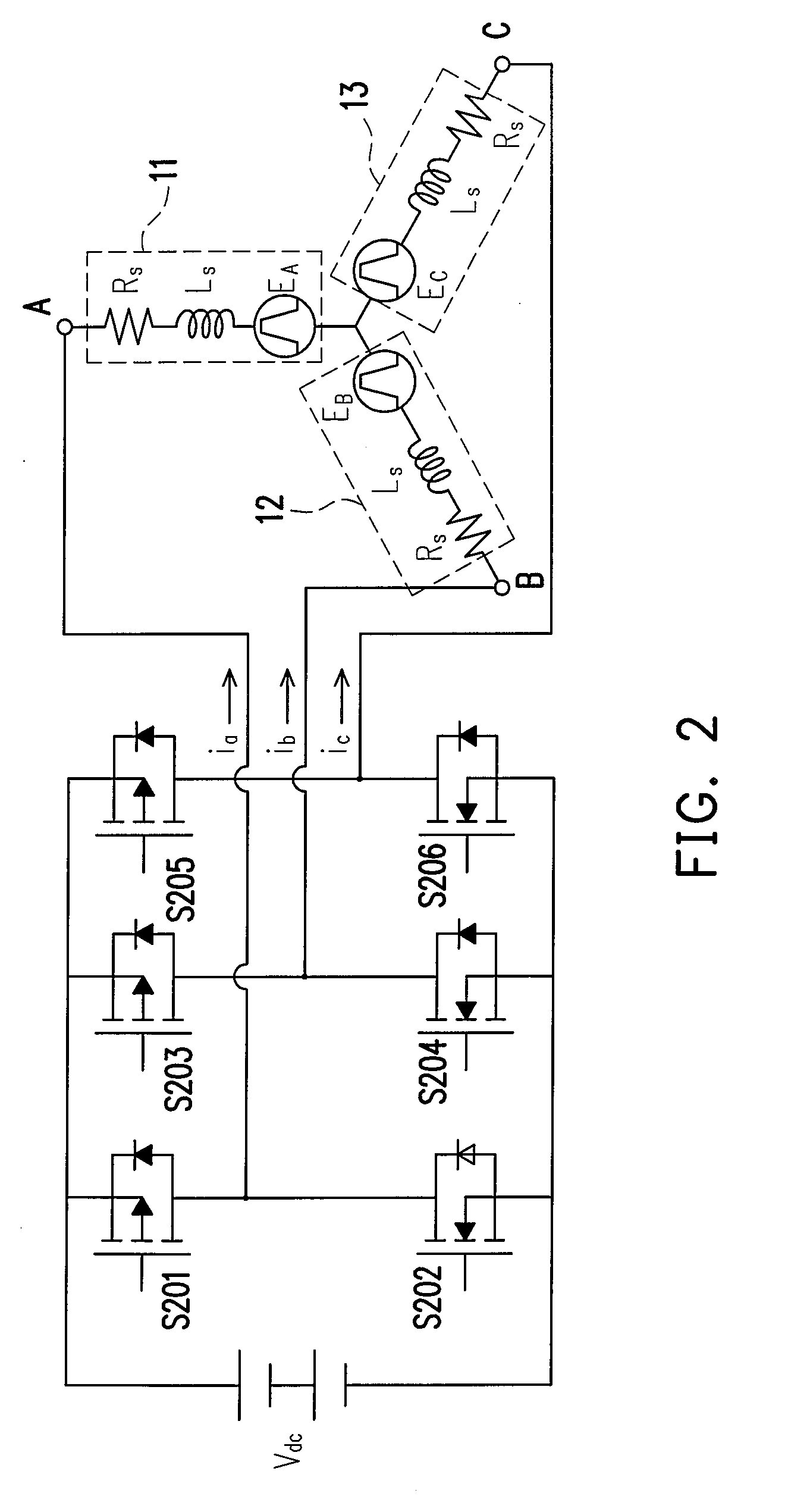Method and circuit for controlling motor and brushless motor system using the same
- Summary
- Abstract
- Description
- Claims
- Application Information
AI Technical Summary
Benefits of technology
Problems solved by technology
Method used
Image
Examples
Embodiment Construction
[0057]Reference will now be made in detail to the present preferred embodiments of the invention, examples of which are illustrated in the accompanying drawings. Wherever possible, the same reference numbers are used in the drawings and the description to refer to the same or like parts.
[0058]In order to solve the problem with the prior art, a method for detecting rotor positions, a circuit for controlling a motor and a brushless motor system are provided in the present invention. A brief analysis on a back-EMF which is closely related to a motor position is introduced prior to the depiction of the method and the apparatus. In the following, a three-phase motor shown by FIG. 2 and a brief mathematic / circuit analysis thereof are exemplarily explained.
[0059]Assuming the equivalent resistor in series connection RS of each stator coil 11, 12 or 13 is a constant value and the equivalent inductance LS of every stator coil is equal to each other, thus, the voltages at nodes A, B and C of t...
PUM
 Login to View More
Login to View More Abstract
Description
Claims
Application Information
 Login to View More
Login to View More - Generate Ideas
- Intellectual Property
- Life Sciences
- Materials
- Tech Scout
- Unparalleled Data Quality
- Higher Quality Content
- 60% Fewer Hallucinations
Browse by: Latest US Patents, China's latest patents, Technical Efficacy Thesaurus, Application Domain, Technology Topic, Popular Technical Reports.
© 2025 PatSnap. All rights reserved.Legal|Privacy policy|Modern Slavery Act Transparency Statement|Sitemap|About US| Contact US: help@patsnap.com



